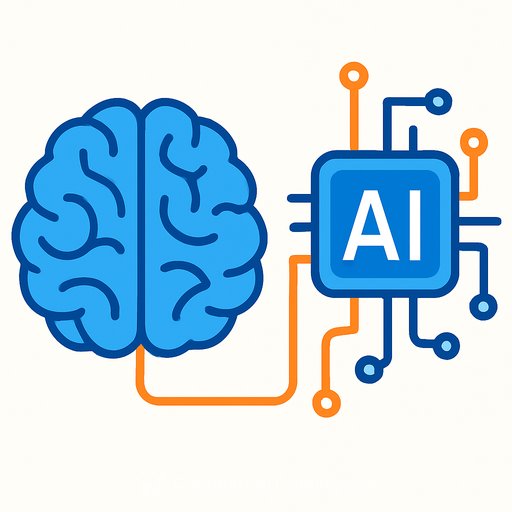Nvidia AI to Drive New Supercomputer with Oracle for the U.S. Energy Department
The U.S. Department of Energy (DOE) is teaming up with Nvidia and Oracle to deliver a new class of AI supercomputing for national labs. The goal is simple: shorten the path from idea to result across climate, materials, energy systems, and national security.
This partnership centers on Solstice, the DOE's largest AI system to date, built with 100,000 Nvidia Blackwell GPUs and advanced networking. It links lab infrastructure with Oracle Cloud Infrastructure (OCI) to give researchers on-demand, scalable compute without the wait.
What is Solstice?
Solstice combines Nvidia's latest GPUs, high-performance networking, and cloud integration to support large-scale training, AI reasoning, and scientific computing. It is built to run frontier models while supporting open-source tools for reproducibility.
Alongside Solstice, a second system named Equinox (10,000 Blackwell GPUs) is planned for 2026. Both systems will be hosted at Argonne National Laboratory and interconnected for shared research.
Why this matters for researchers
- Train larger models in less time and iterate faster on hypotheses.
- Run hybrid workflows that mix simulation, AI, and quantum experiments.
- Scale up on OCI during peak demand and scale down to manage costs.
Nvidia AI and Solstice: The details
Solstice emphasizes throughput and interconnect performance for massive training runs. Nvidia will provide software like Megatron Core for large-model training and NVQLink for linking quantum processors with supercomputing environments, enabling mixed AI-simulation-quantum workflows.
Equinox expands capacity in 2026, creating a multi-system fabric for labs, universities, and select industry partners working on DOE-aligned priorities.
Access and timeline
DOE officials said labs will begin receiving compute as early as next week through repurposed systems while Solstice is built. This hybrid plan provides early wins while capacity ramps.
OCI will host portions of the infrastructure to connect on-site systems with cloud services. That means researchers can burst to the cloud, run larger experiments, and keep on-prem jobs flowing.
Security and oversight
The partnership follows federal security standards with clear access controls, contracting, and lab oversight. Shared environments will enforce who can access specific datasets, models, and workloads.
Experts stress the need for strong governance on data access, model safety, and secure use. DOE indicates these controls are central to the design.
National lab network
Argonne will host Solstice and Equinox and connect to other DOE labs, including Los Alamos. Los Alamos will run dedicated systems from partners such as HPE for mission work, including the Vera Rubin platform and the Mission and Vision systems supporting the National Nuclear Security Administration.
Argonne will also operate additional Nvidia-based systems-Tara, Minerva, and Janus-to give researchers specialist platforms for targeted experiments and model exploration.
Use cases you can run on day one
- High-resolution climate modeling for extreme weather prediction.
- Materials discovery for batteries with faster charge cycles and longer life.
- Drug discovery pipelines integrating simulation and AI-guided screening.
- Grid modeling and safer energy system design.
Smaller research teams and startups may get access through shared programs, lowering the barrier to entry and widening participation in AI-driven science.
Open tools and "agentic" science
Megatron Core (open source) will support large-model training with transparent, reproducible methods. The DOE frames this as a way to create "agentic scientists"-systems that help automate parts of the research loop so teams can test more ideas, faster.
By consolidating large-scale compute and open software, labs can reproduce findings, share techniques, and speed verification across institutions.
Reactions and public statements
Nvidia's leadership highlighted the importance of U.S. AI infrastructure at GTC. DOE leaders called the plan a catalyst for national research goals. Coverage from major outlets underscored the scale of the investment and its impact on scientific computing.
For background on the GPU platform, see Nvidia's Blackwell architecture overview: Nvidia Blackwell.
What this means for the U.S.
Expect faster simulations, more accurate predictions, and stronger tools for mission-driven science. The public-private model is intended to move faster, align investments, and keep the U.S. competitive in AI-driven discovery.
How labs can prepare
- Prioritize workloads that benefit from large-scale parallelism and fast interconnects.
- Plan data pipelines for cloud-lab hybrid workflows with clear governance.
- Adopt open tooling (e.g., Megatron Core) to improve reproducibility and portability.
- Coordinate across teams early to secure time, storage, and ingress/egress budgets.
What happens next
Construction on Solstice begins while early access routes come online. Equinox follows in 2026, with additional systems at Argonne and Los Alamos supporting specialized work. The next few months will show how quickly labs convert expanded compute into validated results.
FAQ
What is the new Nvidia AI supercomputer for the U.S. Energy Department?
Solstice is an AI supercomputer built by Nvidia and Oracle for the DOE to accelerate scientific research using advanced GPUs, networking, and hybrid cloud.
How will Nvidia AI improve U.S. scientific research?
It enables massive simulations and large-model training so teams can iterate faster across climate science, clean energy, and materials development.
What role does Oracle play?
Oracle provides the cloud infrastructure (OCI) that connects DOE's on-site systems with cloud services for flexible, secure, and scalable access.
Why did DOE choose Nvidia AI?
For Blackwell GPUs, demonstrated performance on AI and HPC workloads, and a strong track record across national labs.
When will it be available?
DOE will get early access in late 2025, with full deployment of Solstice and Equinox in 2026.
Helpful resources
- AI courses by job role (Complete AI Training) for teams leveling up on AI workflows in research settings.
Disclaimer
The content shared by Meyka AI PTY LTD is solely for research and informational purposes. Meyka is not a financial advisory service, and the information provided should not be considered investment or trading advice.
Your membership also unlocks:






